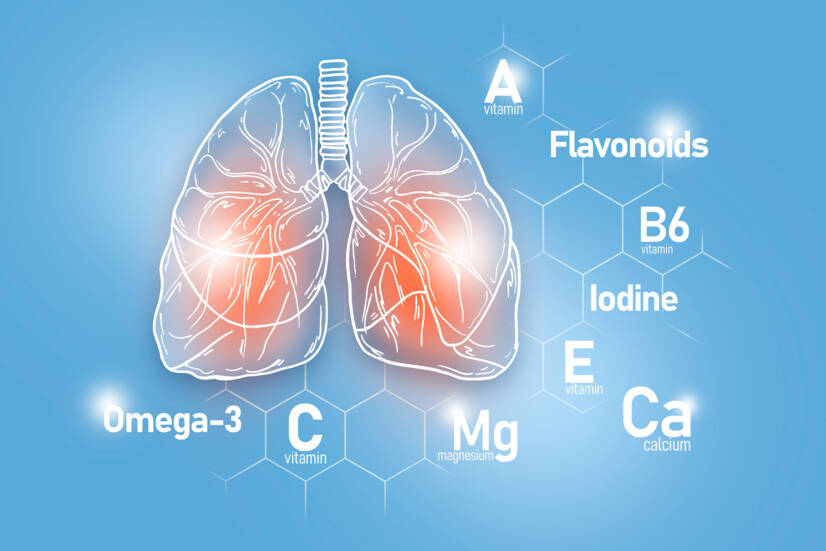- ncbi.nlm.nih.gov - Chemistry and Biological Activities of Flavonoids: An Overview; Shashank Kumar and Abhay K. Pandey
- skp-casopis.sk - Silymarin - a phytopharmaceutical for liver damage; Kupčová
- solen.sk - PHYTO PHARMACY AND SUBSTANCES OF HERBAL YTO PHARMACY AND SUBSTANCES OF HERBAL ORIGIN TAKEN FOR THE TREATMENT OF PERIPHERAL AND CEREBRAL OVERFLOW DISORDERS; Juraj Sýkora, Anita Jančovičová
What are flavonoids, their distribution and occurrence in food? What are their effects?

Flavonoids. What are they and where are they formed? What are their effects and multiple uses? We will look at these questions in our article.
Article content
But what purpose do they serve for plants? Flavonoids in plants are generally responsible not only for their colour but also for their taste. In addition, they prevent the oxidation of fats. However, they also serve to protect vitamins and enzymes.
However, these natural substances are also responsible for various effects in the human body that depend on their structure. They are an integral part of the diet of both humans and animals. However, since they are only produced by plants, flavonoids cannot therefore form in the bodies of humans or animals.
However, the effect in the human body is influenced by their solubility. Low water solubility is also associated with a short residence time in the intestine and lower absorption.
This fact sometimes poses a problem, especially from a medical point of view, in exploiting the therapeutic effects of flavonoids. Therefore, semi-synthetic, water-soluble flavonoids (e.g. hydroxyethylrutoside) are being developed.
Distribution of flavonoids
In 1930, a new substance was isolated from oranges. At the time, it was thought to belong to a new class of vitamins. It was labelled vitamin P. Later, it was discovered that this substance belonged to the flavonoids. It was rutin. More than 4 000 different flavonoids have been identified so far.
Flavonoids are divided into several groups. Their distribution and most important sources are listed in the following table
| Class | Flavonoid | Source |
| Flavanol | Catechin Epicatechin Epigallocatechin | Tea |
| Flavone | Rutin Apigenin | Fruits - especially peels, red wine, buckwheat, red peppers, tomatoes - especially peels |
| Flavonol | Quercetin Kaempferol Myricetin | Onions, red wine, olive oil, berries, grapefruit |
| Flavanones | Hesperidin Taxifolin Naringenin | Citrus fruits - especially grapefruit, lemons and oranges |
| Isoflavones | Genistin Daidzin | Soybeans - fruits |
| Anthocyanidin | Apigenidin Cyanidin | Cherries, raspberries, strawberries |
The groups most commonly found in our diet are:
- Flavones
- Flavonols
- Isoflavones (soy)
As with most substances found in foods, the preparation and processing of foods can reduce the flavonoid content depending on the methods used.
The bioavailability of some flavonoids varies considerably depending on the food source. For example, the absorption of quercetin from an onion is four times higher than from an apple or tea.
One of their effects is antioxidant. They scavenge free radicals and/or metal ions. By scavenging oxygen radicals and ions, they protect cells from damage.
They also have the ability to kick-start human protective enzyme systems. Many studies have shown the protective effects of flavonoids against many infectious (bacterial and viral) diseases. But also against degenerative diseases such as:
- cardiovascular diseases
- cancer
- and other age-related diseases
Flavonoids and their effects
Antioxidant protection
Flavonoids have many effects in the body. The best studied are their antioxidant effects.
Their ability to protect cells from oxidative stress depends mainly on their chemical structure.
A common consequence of oxidative stress is lipid peroxidation. Flavonoids protect lipids from oxidative damage by various mechanisms:
- inhibit the production of radioactive oxygen species (ROS)
- scavenge ROS
- increase or support the body's antioxidant defences
In particular, Quercetin is known for its stabilizing ability.
Liver protection
Various chronic diseases, such as diabetes, can lead to the development of clinical manifestations of liver disease.
Flavonoids reduce the peroxidation of liver lipids. They inhibit the release of pro-inflammatory cytokines and protect against the development of steatosis (fatty liver).
Some flavonoids have protective effects on the liver.
These include:
- Catechin
- apigenin
- Quercetin
- rutin
- venoruton
Silymarin is the most well-known of this group. Silymarin is the collective name for 3 flavonoids derived from the milk thistle (Silybum marianum).
It consists of:
- silybinin (isosilybinin)
- silychristin
- silydianin
Medicinal products derived from the fruits of milk thistle contain 40 to 70 % silymarin in the ratio: silybinin : isosilybinin : silychristin : silydianin - 3 : 1 : 1 : 1 : 1.
Flavonoids can not only protect the liver from damage, but also help regenerate the damaged liver.
Several clinical studies have demonstrated the efficacy and safety of flavonoids in the treatment of hepatobiliary dysfunction and digestive disorders - such as fullness, lack of appetite, nausea and abdominal pain.
Antibacterial effects
Plants synthesize flavonoids in response to microbial infection.
Therefore, they are effective antimicrobials against a wide range of microorganisms.
Several flavonoids have been shown to have strong antibacterial activity, including the following:
- apigenin
- galangin
- flavone and flavonol glycosides
- isoflavones
- flavanones
- chalcones
The mode of antimicrobial action may be related to several mechanisms - their ability to inactivate microbial enzymes, cell envelope transport proteins, etc.
Anti-inflammatory effects
Inflammation is a normal biological process. Inflammation is the body's response to:
- tissue damage
- infection by microbial pathogens
- chemical irritation
It begins with the migration of immune cells from blood vessels and the release of mediators at the site of injury. This process is followed by the production of inflammatory cells, the release of ROS and pro-inflammatory substances. All this is done to remove foreign pathogens and repair injured tissues. In general, normal inflammation proceeds rapidly and resolves on its own. Various chronic disorders have a different course and prolonged inflammation.
Some flavonoids significantly affect the function of the immune system and inflammatory cells.
These flavonoids have anti-inflammatory and analgesic effects:
- hesperidin
- apigenin
- luteolin
- quercetin
Some flavonoids are potent inhibitors of prostaglandin production, a group of molecules with pro-inflammatory effects.
Anti-tumour effects
Our diets also play an important role in cancer prevention. Fruits and vegetables containing flavonoids are particularly preventive.
Eating onions and/or apples, two of the main sources of quercetin, helps to reduce the incidence of cancer:
- Prostate
- lung
- stomach
- breast
In addition, moderate consumption of wine also appears to reduce the risk of cancer:
- Lung
- uterine lining
- oesophagus
- stomach
- colon
The relationship between fruit and vegetable consumption and cancer prevention has been extensively documented. It is suggested that significant health benefits could be achieved by significantly increasing the consumption of flavonoid-rich foods.
Higher consumption of phytoestrogens, including isoflavones and other flavonoids, has been shown to provide protection against the risk of prostate cancer.
It is well known that oxidative stress can stimulate the development of cancer. Therefore, potent antioxidants have the potential to combat the progression of carcinogenesis.
A diet rich in radical scavengers should therefore reduce the influence of certain free radicals on cancer development.
Antiviral activity
Natural compounds are an important source for the discovery and development of new antiviral drugs because they are affordable and have low side effects.
Naturally occurring flavonoids with antiviral activity were recognized as early as the 1940s. Many reports are available on the antiviral activity of various flavonoids.
The antiviral effects of some flavonoids are listed in the following table
| Flavonoid | Virus |
| Quercetin | Rabies virus |
| Herpes virus | |
| Parainfluenza virus | |
| Polio virus | |
| Mengo virus | |
| Pseudorabies virus | |
| Rutin | Parainfluenza virus |
| Influenza virus | |
| Apigenin | HIV virus |
| Herpes simplex virus | |
| Pseudomorabies virus | |
| Galangin | Herpes simplex virus |
| Naringin | Human respiratory syncytial virus |
Protection of the cardiovascular system
Several epidemiological studies suggest that drinking green or black tea may lower blood cholesterol concentrations and blood pressure. This provides some protection against cardiovascular disease.
Atherosclerosis is a disease of the arteries. It is caused by the deposition of cholesterol in the walls of the blood vessels. This narrows the blood vessels and reduces blood flow and oxygen supply to the organs.
It is believed that one of the key substances causing atherosclerosis is the oxidised LDL cholesterol molecule. The isoflavan glabridin, the main compound contained in Glycyrrhiza glabra, inhibits LDL oxidation through free radical scavenging.
Oxidative modification of LDL cholesterol is thought to play a key role during atherosclerosis.
Peripheral circulation disorders
Flavonoids are also widely used in vascular diseases. Specifically in peripheral circulation disorders.
Symptoms of this disorder include:
- feeling of heavy legs and leg pain - after prolonged standing or sitting
- swelling - in the ankle area
Risk factors are:
- age
- Heredity
- female gender
- obesity
- pregnancy
- prolonged standing
- higher body height
- defecation disorders (on a low-fibre diet)
Most of the main factors - apart from obesity and constipation - cannot be controlled.
Examples of flavonoids used in circulatory disorders include:
- rutin
- troxerutin
- oxerutin
- hesperidin
- diosmin
- quercetin
- diosmin
Rutin has anti-edema effects, but also anti-inflammatory effects. Hesperidin and diosmin have similar effects.
In addition to the effects mentioned above, flavonoids found in berries - blueberries, raspberries, blackberries and others - may have positive effects against Parkinson's disease and may help improve memory in the elderly.
Interesting resources
Related










